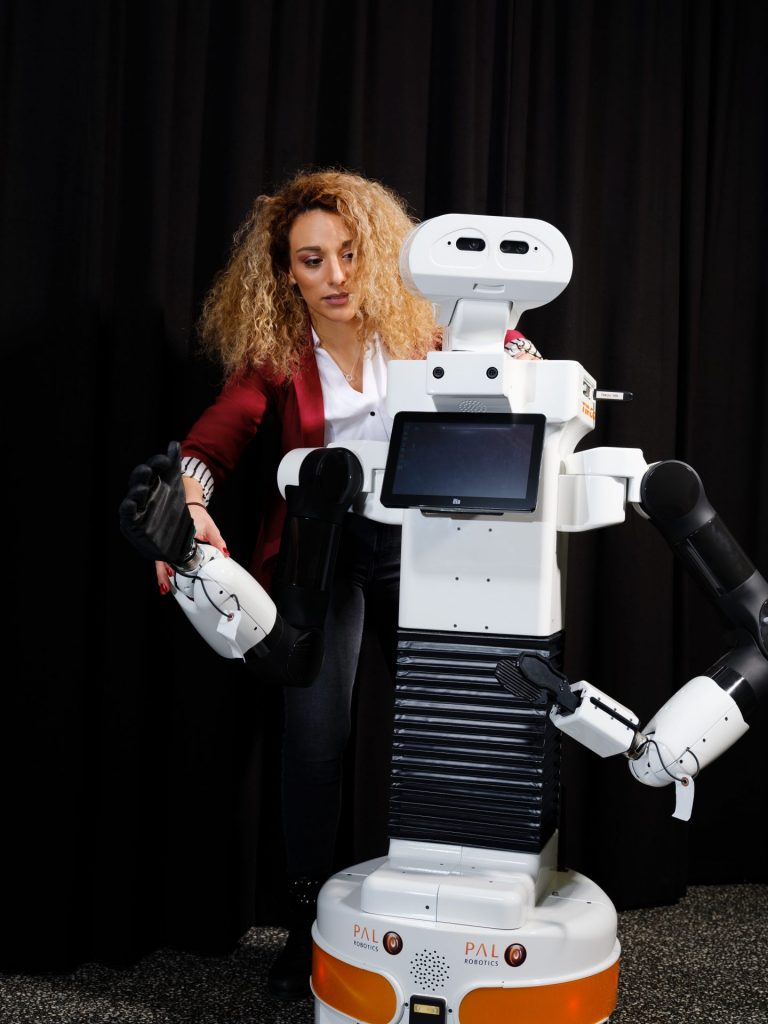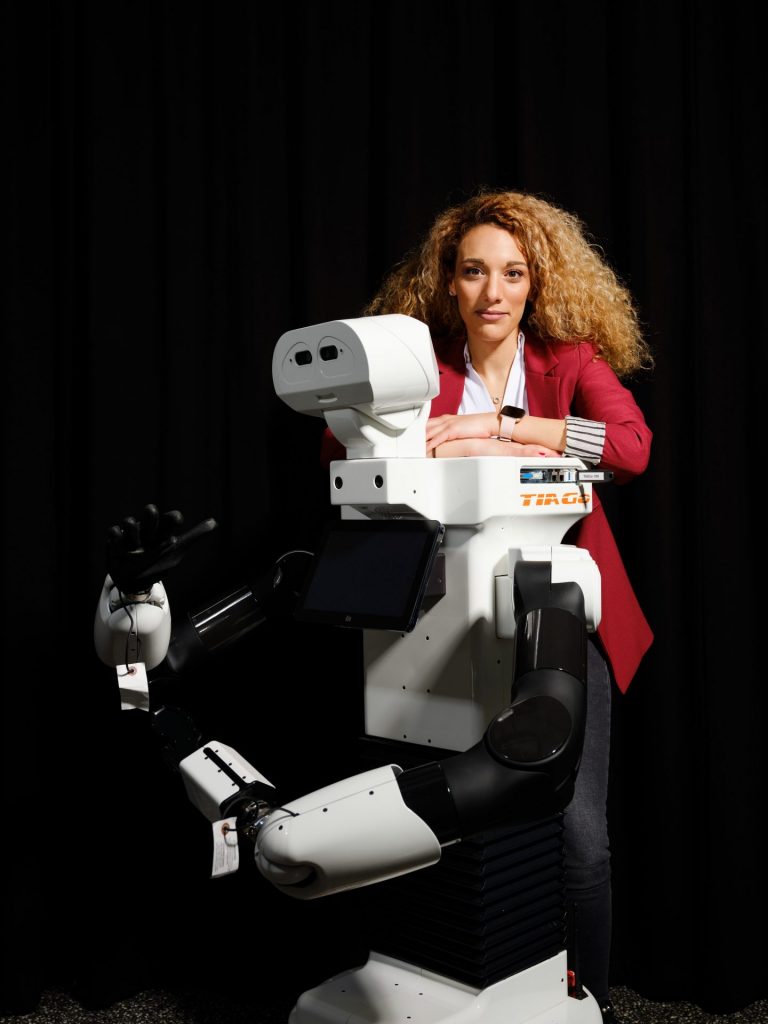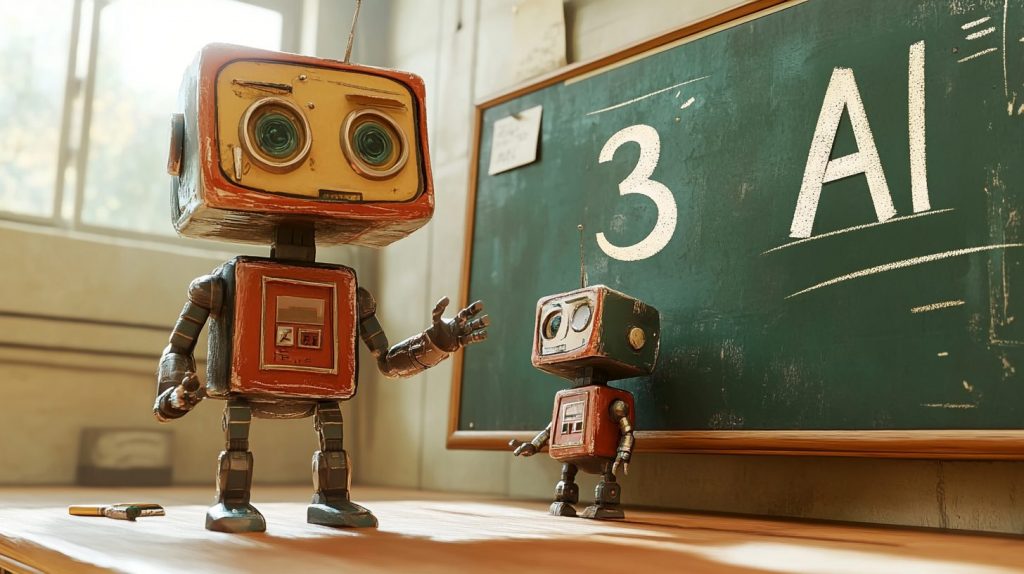
How to close the gap between Robotics Vision and Reality
“Uncertainty is the biggest challenge” – How robot-human interactions can work
About Prof. Dr. Georgia Chalvatzaki
Prof. Dr. Georgia Chalvatzaki has been an Assistant Professor at TU Darmstadt since early 2022, where she leads the iROSA group for “Robot Learning of Mobile Manipulation for Assistive Robotics”.
Chalvatzaki completed her PhD studies in 2019 at the “Intelligent Robotics and Automation Lab” at the Electrical and Computer Engineering School of the National Technical University of Athens in Greece and then came to Darmstadt for a postdoctoral position in the “Intelligent Autonomous Systems” group.
In 2021, Chalvatzaki received funding from the prestigious Emmy Noether Program (ENP) of the German Research Foundation (DFG) and started as an independent research group leader.



Robotic visions and their reality
For decades, robotics research has wanted to bring robots into our everyday lives. In the process, it has made enormous progress in recent years. But despite all the progress, there is a huge gap between the visionary goals of robotics and current reality: many tasks that are commonplace for humans are still difficult or impossible for robots to perform.
Chalvatzaki wants to close this gap: robots should use learning algorithms to solve complex tasks in real-world environments while coming to grips with the uncertainty that comes with working with humans.
The scientist is conducting research at the interface between machine learning and classical robotics. Her goal is AI assistants embodied in robots. To this end, Chalvatzaki is working with mobile manipulator robots, which are robotic arms on wheels equipped with numerous sensors.
Intelligent robot assistants could help in nursing care, for example: Germany alone has a shortage of nearly 100,000 caregivers, says Chalvatzaki. Many elderly people are cared for on an outpatient basis. Fewer and fewer young people want to go into care. “If we really want to take care of the aging population, we need robots that can take over some everyday tasks.”
But Chalvatzaki says current robots are quickly overwhelmed by tasks that seem simple to us humans. They might not reliably bring the tablet tray, for example.
Robots must learn to cope with uncertainty
The researcher sees the numerous uncertainties involved in human-robot interaction as a central challenge: Incomplete sensor information captures only part of the environment or generates noise that must be processed by the systems.
The robots also interact in an environment where humans also move – and their behavior is difficult to predict. This can lead to errors or even be dangerous.
Intelligent robot assistants therefore need good coordination, must be able to recognize errors independently and learn from them. This is a central research topic of Chalvatzaki and her colleagues. At the IROS 2022 robotics conference, Chalvatzaki received a best paper award for her research on this topic.
Together with the iROSA Lab, Chalvatzaki also developed an algorithm that enables a safe response to unanticipated human movements. This improves safety for people and the environment when dealing with robots.
Multimodal robotics and powerful AI
Intelligent robot assistants are embodied AI agents, according to Chalvatzaki. They would have to be able to move, perceive and convert comprehensive instructions into small subtasks. Corresponding systems would have to be multimodal in design, i.e., able to process various data such as images, text and audio, and would also need functions that operate at the interface of natural language, logic, geometry and motor control.
Beyond the potential benefits to an aging society, therefore, research on advanced robotic systems also contributes to broader AI research.
This is precisely where Chalvatzaki sees hessian.AI’s major advantage. The center offers cooperation and knowledge sharing between different fields, such as robotics and natural language machine processing. She also appreciates the center’s public relations work, which presents AI research to a broad public and introduces young women to STEM subjects through targeted events, for example.


